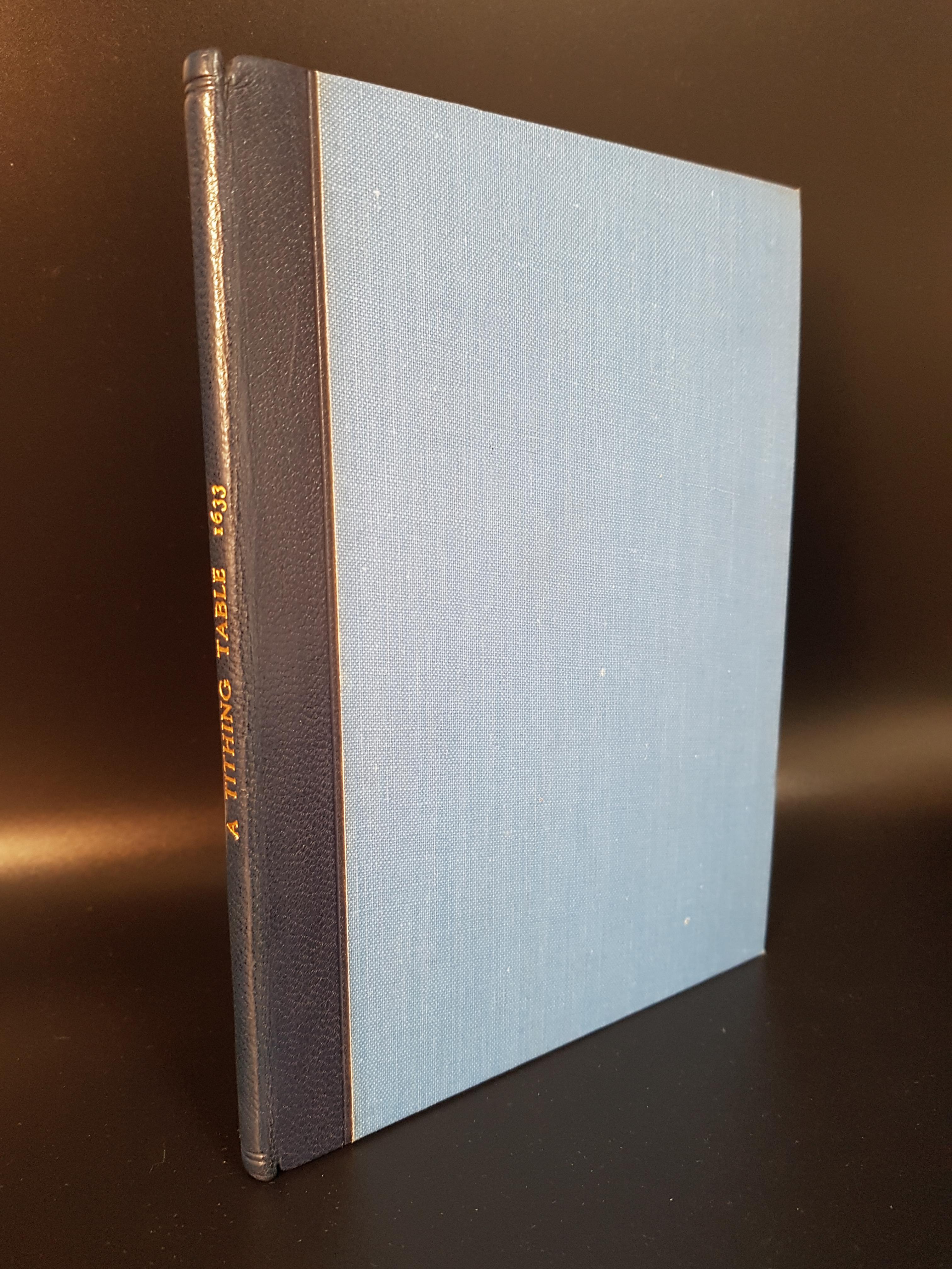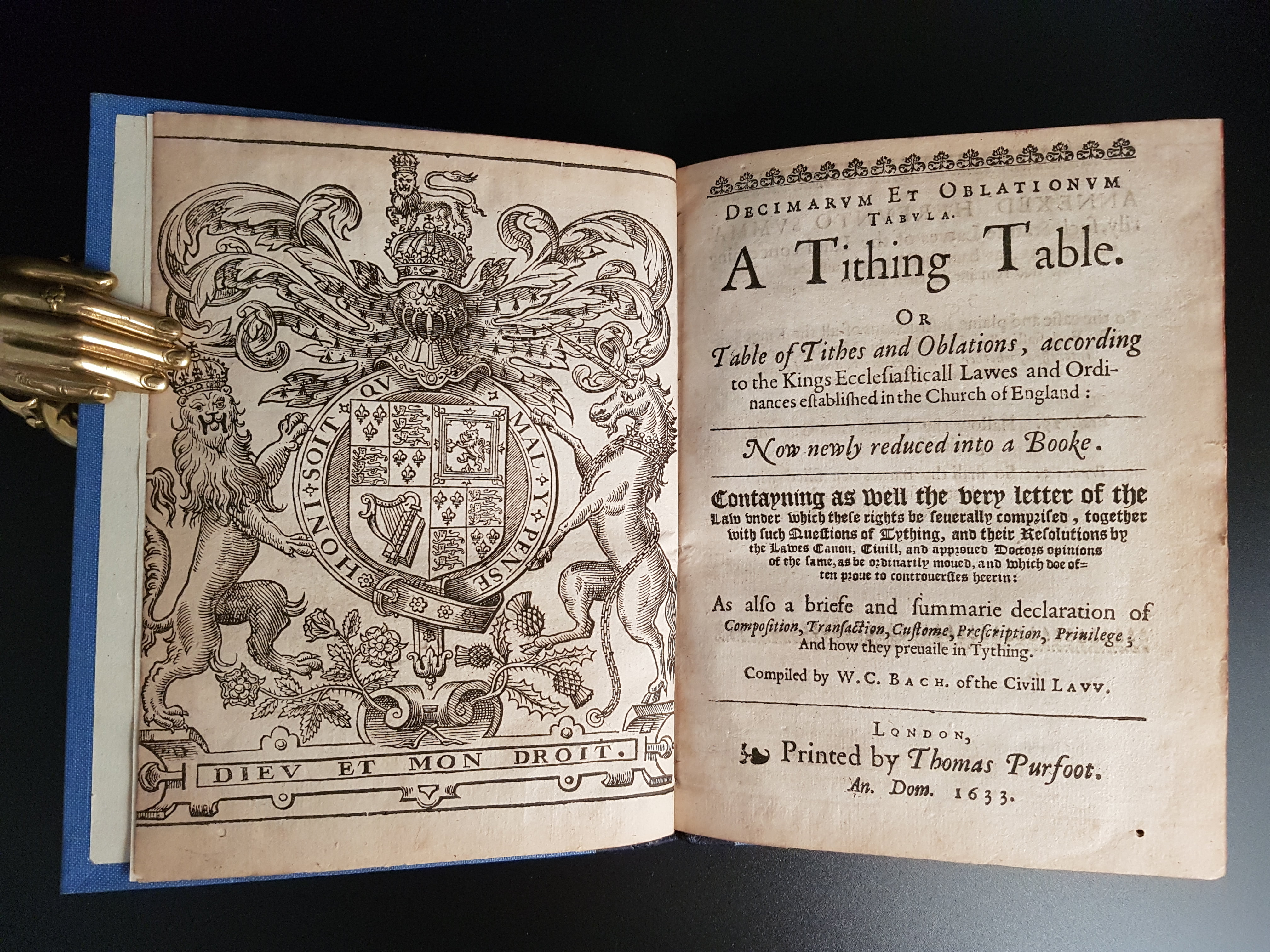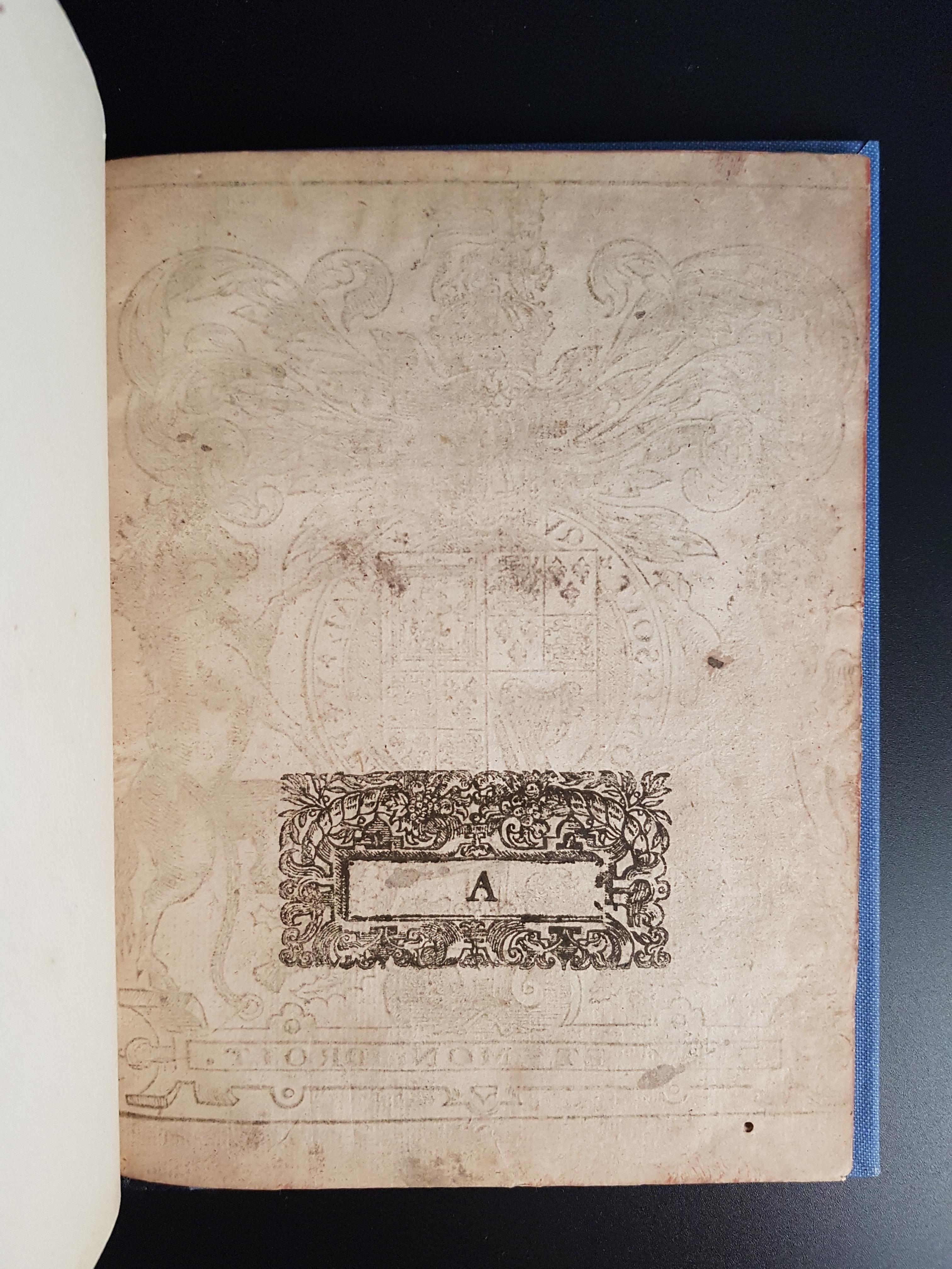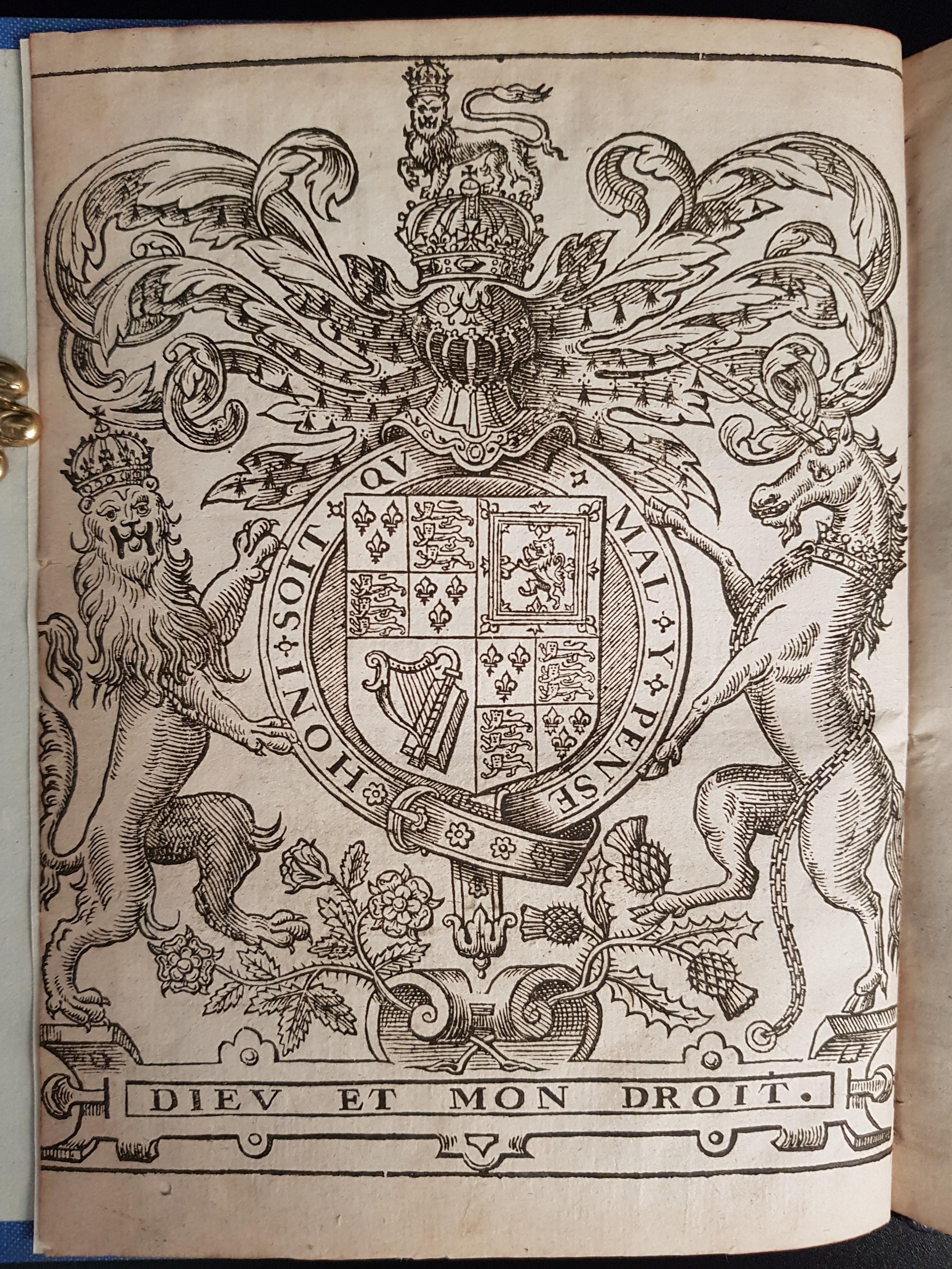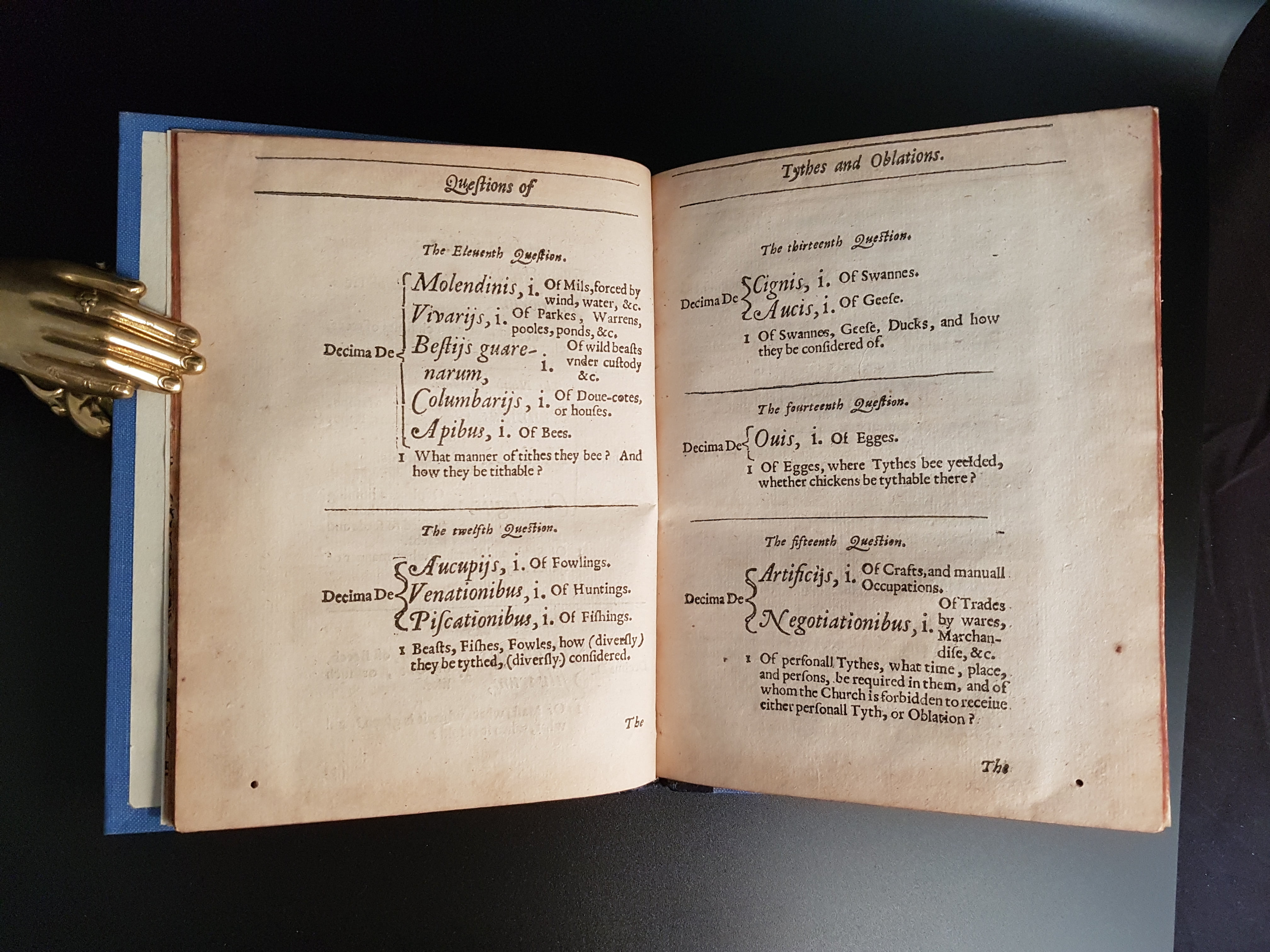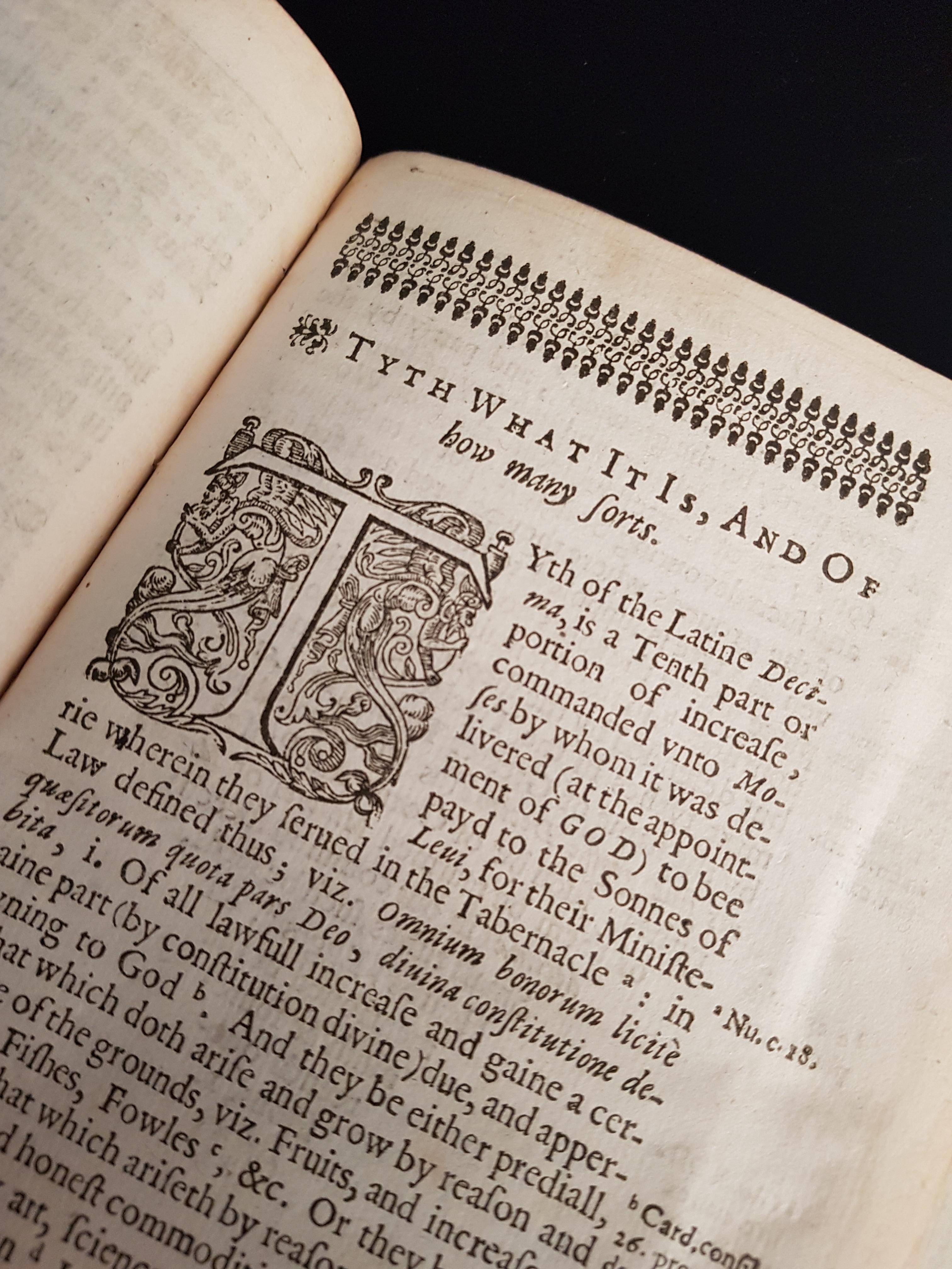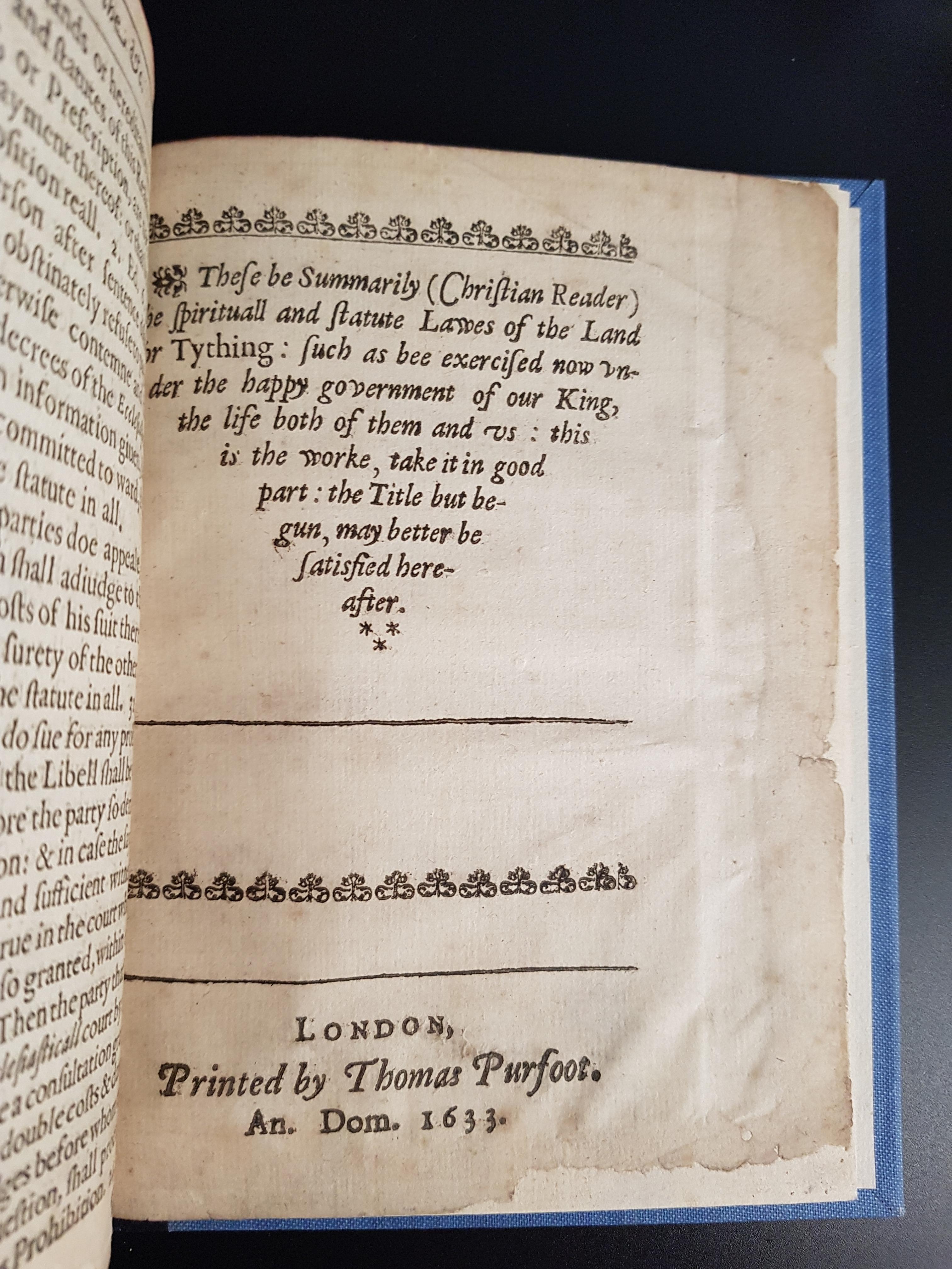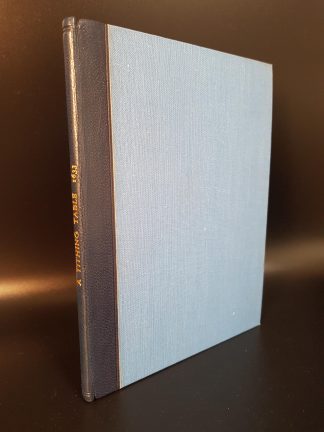CLARK, William
Decimarum et oblationum tabula. = A Tithing Table. Or Table of tithes and oblations, according to the Kings ecclesiasticall lawes and ordinances.
London, Printed by Thomas Purfoot, An. Dom. 1633£1,500.00
FIRST EDITION thus. 4to. 32 unnumbered leaves. A-H . Roman, Italic and Gothic letter. Full page woodcut of royal arms on verso of first leaf [just shaved at outer margin], signature within woodcut border on recto, floriated initials, typographical headpieces and ornaments. Light age yellowing, lower blank margin of last three leaves with small tear, restored, outer margin of last backed, early restoration to tiny tears in outer margins last four leaves, a little minor dust soiling in places, the odd marginal thumb mark. A good copy in modern quarter morocco over boards.
A most interesting work on the state of Tithes in Britain, including a short description of tithes and a summary of the Statutes of tithing, sometimes erroneously attributed to William Crashaw. The pamphlet was issued as part of the ‘Tithes controversy’ in which many Puritans resisted the payment of tithes. William Clark describes the state of confusion over tithes that stemmed from Henry VIII’s dissolution of the monasteries in which “at a stroke, came at least one-third of the tithes of England into lay hands, and the lay rector appears on the scene” Robert Brown. ‘Tithes in England and Wales.’ The confusion after the dissolution lead many to avoid paying tithes altogether, and Henry VIII to issue new statutes concerning tithes, followed by Edward and Elizabeth I. Clark describes the confused situation in his preface “The Canon and civil laws since first K. Henry of happy memory the eight, dismembered their bodies, and restored to the diadem of the Land (over the state Ecclesiastical) the ancient jurisdiction of the Crowne, they have and do lie hidden; such of them that K Henry then continued and K Edward that succeeded him .. and afterwards were the late Queenes deceased … they have, these Lawes, and doe lie hidden in manifold, darke, and dangerous corners, in practise only familiar in Consistories and their knowledge to the country obscure.” The preface, (disingenuously dated 1591, considering he refers to Queen Elisabeth as deceased) discusses his intentions in laying out, in a systematic fashion, the function of tithes, so that by shining a light on them it might lead to their eventual reform. The tithes concern all the produce of the land from tax on eggs, geese, mills, fish, fowl, trades, crafts, merchandise, woods pasture etc etc.
“The “Tithes Controversy” was one of the many hot-button religio-political issues of the 1640s and 50s that helped polarize Civil War England. Throughout the seventeenth century, popular support arose for the non-payment of tithes—an attack on the very idea of a state church. The problem with tithes stemmed from the rise of Separatist or “congregationlist” sentiments, in part from economic issues such as lay “impropriations,” that is, the collection of tithes by lay owners of ecclesiastical lands (tithes were expropriated to lay owners following the dissolution of the monasteries). Even pro-tithe spokesmen like Henry Spelman vilified lay impropriators who “imployed the church to prophane uses, and left the parishioners uncertainly provided of divine service.” In the more radical views of non-conformist groups like the Diggers, the abolition of tithes was bound up with the abolition of rents and private property, a notion voiced in a number of polemical pamphlets that undoubtedly put conservative landowners on edge. Ironically, backlash against impropriators in the form of non-payment of tithes left legitimate ministers without a means of living in some parishes. In turn, many wished to change the way ministers made a living, either through government stipends, voluntary parishioner contributions, or by putting ministers to work. Nonetheless, the laws largely stayed the same and the non-payment of tithes continued on unabated. If anti-tithing pamphlets galvanized this behavior, a number of writers sought to counteract it by waging pamphlet warfare of their own.” Phil Palmer. ‘MCRS Rare Books blog’
This work was first produced as a table of two sheets in 1595, and twice reprinted. This is the first edition in book form.
ESTC S109042. STC 4323.6.In stock


